Bathroom Readers' Institute's Blog, page 52
September 28, 2017
R.I.P. Hugh Hefner
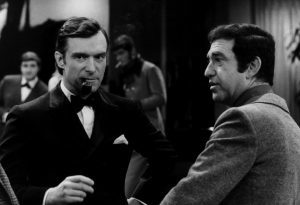
The man who founded Playboy in 1953 has passed away at age 91. Even aside from creating a media empire, Hef lived a pretty interesting life.
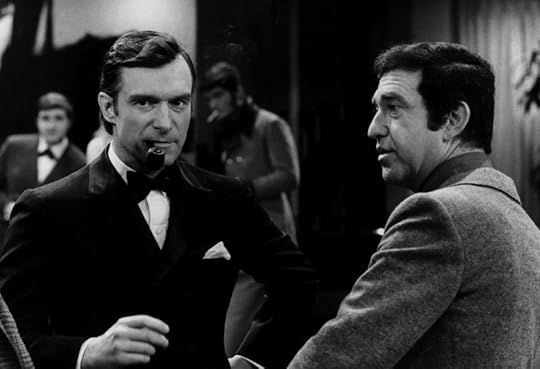
He Was Fascinated With Marilyn Monroe
Part of the reason why Playboy the magazine took off right away is because of its marketing hook: issue no. 1 featured racy images of Marilyn Monroe, the biggest sex symbol and movie star of the day. Monroe didn’t exactly pose for the brand-new publication. Hefner acquired the pictures from photographer Tom Kelly, who took the photos in 1949, long before Monroe was world-famous. Kelly paid Monroe $50; Hefner paid Kelly $500. That first issue of Playboy with Monroe on the cover sold a whopping 50,000 copies. Hefner’s public life began with Monroe, and he’ll be near her always. In 1992, he bought the funeral plot at Los Angeles’s Westwood Village Memorial Park immediately adjacent to Monroe’s. It cost him a mere $75,000.
He Was a Talk Show Host
From 1959 to 1960, Hefner hosted a Playboy-branded talk show called Playboy’s Penthouse. Syndicated to TV stations around the country, it was taped at a studio in Chicago was dressed to look like Hefner’s stylish, swingin’ bachelor pad. Playboy models and “Playmates” served as extras while Hefner casually interviewed celebrities and musicians. A decade later, the show was revived, only shot in Los Angeles and with the title Playboy After Dark.
He’s Synonymous With Rabbits
The logo of all Playboy products is a sophisticated bunny—the Playboy Bunny—and cocktail waitresses at Hefner’s chain of Playboy Clubs in the ‘60s and ‘70s wore skimpy bunny costumes. Hefner also donated money to conservation causes to protect an endangered species of marsh rabbit. In recognition of Hefner’s love of all things leporine, in 2010 the rabbit was named Sylvilagus palustris hefneri.
He Owned the Letter Y
Hefner, an icon of Los Angeles and the Hollywood lifestyle (in part because of Playboy, and in part because of the Playboy Mansion), gave back to La La Land in 1978. He organized a drive to restore the famous Hollywood sign. He hosted fundraisers at his mansion and won the auction to “buy” the letter “Y” in Hollywood. Or rather, he paid for its restoration costs of $27,000.
The post R.I.P. Hugh Hefner appeared first on Trivia Books and Facts | Uncle John's Bathroom Reader.
They Found Paul Revere’s Outhouse!
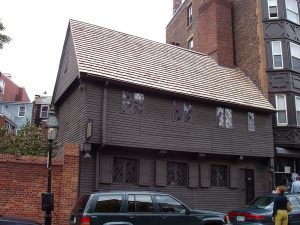
“ Now here ’ s a little story we ’ ve got to tell, about a famous person you know so well. It started way back in history — someone just uncovered Paul Revere ’ s privy. ”
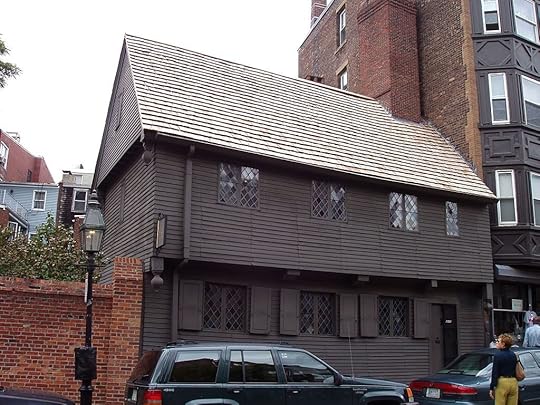
The Paul Revere House has stood in the North End neighborhood of Boston since 1711. Many people have lived there, but most famously Paul Revere. You’ll remember from your elementary school history class that on April 18, 1775 he’s said to have given the colonial army a heads up of British troops arriving. On his famous “Midnight Ride,” Revere reportedly rode his horse through the darkened streets of Boston shouting, “The British are coming!”
A hero of the American Revolution, sure, but Revere was also a human being who had to heed the call of nature. And archaeologists think they’ve discovered the remnants of Paul Revere’s outhouse, or privy, on the grounds of the Paul Revere House.
Boston’s city archaeologist Joe Bagley (Boston has so much history, particularly early American colonial history, that it has its own archaeologist) recently uncovered a four-by-six-feet rectangle made from bricks. It’s too small to be the leftover foundation of a long-gone shed—but it’s just the right size for an outbuilding of the bathroom variety. And because there’s clay there, it indicates that whoever made the structure lined it with that material to prevent whatever went on inside there from leaking into the house’s nearby well.
Privies and other waste facilities from the past may be gross, but they can provide a wealth of information about the past. Bagley told Boston radio station WBZ that privies in colonial were used for doing one’s “business” as well as a household trash receptacle. That means there might be leftovers of interesting historical items or documents—already Bagley and his team have found a part of a 1700s-era beer stein and some coal. The other stuff in there could also give up some clues. “We’re hoping to find the individuals’ waste themselves, which, we can get seeds from what they were eating, we can find paradises, find out what their health was,” Bagley said.
The next step for Bagley: a deep dig into the probable privy to look for something called “night soils.” Those are what Bagley calls “that kind of smelly, dark soils which are now composted and not that bad, but they might have a stench still, a little bit.”
The post They Found Paul Revere’s Outhouse! appeared first on Trivia Books and Facts | Uncle John's Bathroom Reader.
Food Origins

When Uncle John was a kid, the basic food groups were meat, bread, vegetables, and dairy products. Uncle John always wondered why they left out the other basic food groups: coffee, candy, cold soup, fish sticks, corn dogs, and salad dressing. (This article was first published in Uncle John’s Curiously Compelling Bathroom Reader .)

Cappuchino
In Vienna, a Kapuziner is a cup of espresso with a few drops of cream stirred in. The drink gets its name from the Catholic order of Kapuzin friars, who wore a brown habit or robe that was about the same color as the drink. (In English, the friars are known as Capuchins.) In the late 1800s, Austrian soldiers stationed in northern Italy introduced Kapuziners there; the Italians renamed them cappuccinos. When high-pressure espresso machines were introduced in 1906, the Italians put their own stamp on the drink by making it with steamed, foamy milk, and plenty of it, instead of just a little bit of cream.
Vichyssoise
Don’t let the French name fool you—this leek-and-potato soup (pronounced vi-she-swaz) is as American as apple pie. Louis Diat, the head chef of New York’s Ritz-Carlton Hotel, came up with this cold soup in 1917 while looking for something to serve to customers in the sweltering heat of New York summers.
Fish Sticks
Clarence Birdseye single-handedly invented the frozen-food industry in the late 1920s when he figured out how to freeze food without ruining its flavor, texture, or nutritional value (you have to freeze it quickly). His early machines worked best with food that was cut into slender pieces, and one of the first foods he came up with was a knockoff of a French delicacy called goujonettes de sole: sole fillets baked or fried in bread crumbs and a light batter. Birdseye switched to cheaper fish (cod), fried it in a heavier batter, and scored a hit: If you had a freezer in the 1930s, more likely than not it contained a box or two of fish sticks.
Licorice Allsorts
You might not recognize these candies by name, but you’d know them by sight—they’re the variety of licorice candies that are sold as a mixture of colors, shapes, and sizes. The candies were created by the Bassetts Company of England in the late 1800s. The original plan was to sell each shape separately, but that plan was foiled in 1899 when a salesman named Charlie Thompson spilled a carefully arranged tray of the pieces during a sales call. The buyer actually preferred the candies all mixed up…and as it turned out, so did everyone else: The candies sold better as a mixture than they ever did individually.
Wish-Bone Salad Dressing
When Phillip Sollomi returned from fighting in World War II in 1945, he opened a restaurant in Kansas City, Missouri. The house specialty was fried chicken, so he named the restaurant “The Wishbone.” In 1948 he started serving his mother’s Sicilian salad dressing; it was so popular that customers asked for bottles to take home. So he started bottling it…and soon demand was so strong that he had to make it in batches of 50 gallons at a time. In 1957 he sold the salad dressing business to the Lipton Tea Company, and today Wish-Bone is a bestselling Italian dressing in the United States.
Corn Dogs
Even if he wasn’t the very first person to dip a hot dog in corn meal batter and deep fry it, Neil Fletcher was the guy who popularized the dish when he began selling it at the Texas State Fair in 1942. Those early dogs were served on plates; it wasn’t until four years later that Ed Waldmire, a soldier stationed at the Amarillo Airfield, became the first person to put the corn dog on a “stick” (the first ones were actually metal cocktail forks, later replaced by wooden sticks).
The post Food Origins appeared first on Trivia Books and Facts | Uncle John's Bathroom Reader.
September 27, 2017
It’s National Chocolate Milk Day

Myth: It doesn ’t come fro m chocolate milk-giving cows. Truth: Everything else in this article.

Columbus brought cocoa back to Europe from the Americas in the early 1500s, but it didn’t catch on. After Spanish explorer Cortez overran the Aztecs a few decades later, he brought cocoa to Europe again, although he added sugar and cinnamon to cut into the natural bite of the chocolate. That’s probably the introduction of sweetened hot chocolate—which is really just hot chocolate milk.
Chocolate milk is so tasty that some people think it might be too good to be true. According to an urban legend that spread in the 1980s and 1990s, chocolate milk was invented as a way for dairies to sell milk that was unsellable because it got tainted with cow blood during the milking process. The chocolate “hides” the blood. (Fortunately, this isn’t true.)
The dairy industry has promoted chocolate milk as a post-workout recovery beverage, a substitute for Gatorade. While the thought of drinking a big glass of thick, goopy, sweetened milk after a strenuous workout sounds suspect (and a little gross), there’s data to back it up. Chocolate milk’s unique mixture of carbohydrates and protein really does help the body replenish fluid and aid muscles.
While chocolate milk is a common and popular way to get kids to drink milk—and get that calcium for their growing bones—some nutrition advocates don’t think it’s a good idea. According to the Jamie Oliver Food Foundation, kids who drink chocolate milk with their school lunch get an extra three or so teaspoons of added sugar each time. That adds up to four pounds over the course of a school year.
Two actors who got a big career boost from chocolate milk: Adam West and Peter Billingsley. The former starred as a spy mascot named Captain Quik in early-1960s advertisements for Nestle Quik chocolate milk mix. That got the attention of producers of a new Batman TV series. About two decades later, Billingsley, best known for A Christmas Story, was all over TV as Hershey’s Syrup commercial character “Messy Marvin.”
Chocolate milk is by far the most popular flavored milks. Other kinds that are commercially available: strawberry, cookies and cream, coffee, and root beer.
The post It’s National Chocolate Milk Day appeared first on Trivia Books and Facts | Uncle John's Bathroom Reader.
September 25, 2017
The Broadway of the Desert
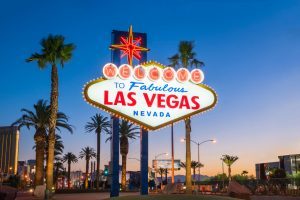
Las Vegas has everything: Fabulous hotels, casinos, world class restaurants, and shows by some of the biggest stars in music. Something that hasn’t worked in Sin City: Broadway-style shows. Here are some that came to Vegas and died in Vegas.
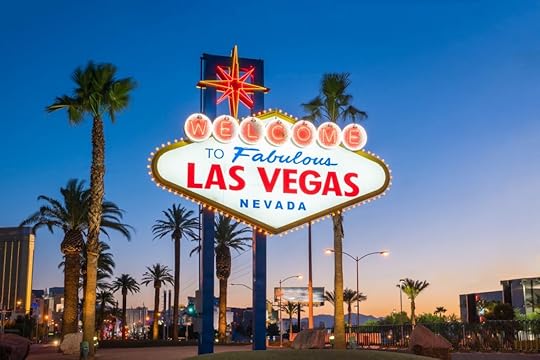
Hairspray
Hairspray has been successful in almost all of its incarnations. Cult filmmaker John Waters’ semi-biographical story of the desegregation of a 1960s Baltimore TV teen dance show was a hit movie in 1988, and a stage musical version was a Broadway smash when it opened in 2002, ultimately running for six years and winning eight Tony Awards, including Best Musical. The musical was then made into another movie, and it was adapted for a live NBC version in 2016. In other words, Hairspray had a lot of fans, but they didn’t come see it in Las Vegas. In 2006, a planned four-year run of Hairspray at the Luxor hotel and casino closed after a little more than three months. It almost never sold out its modest 1,500-seat theater, despite the star presence of Harvey Fierstein, reprising his role from Broadway. (Other Broadway hits that opened—and quickly closed—in Las Vegas around the same time: Spamalot, The Producers, and Avenue Q.)
Pawn Shop Live
Pawn Shop Live was a unique idea: It was a scripted parody of a popular reality show…and it was a musical. It was inspired by and poked fun at Pawn Stars, the History Channel show about a family-run Las Vegas pawn shop. (Pawn Stars’ Rick Harrison co-wrote the show.) Opening in 2014, Pawn Shop Live got decent reviews for its songs and quirky staging (Pawn Stars’ “Old Man” was represented on stage by an actor wearing an enormous, wrinkled costume head), but it couldn’t pull in enough fans in its initial home at the Golden Nugget for more than a few months. It moved to the Riviera before closing down completely about a month later.
Duck Commander Musical
Believe it or not, Pawn Shop Live isn’t the only reality TV-based musical to hit Las Vegas. In 2015, Duck Commander Musical, based on the hit A&E show Duck Dynasty. The musical attempted to strike on the series’ mixture of spirituality, family drama, and comedy, but couldn’t pull in huge audiences the way the TV show did. After opening at the Rio in early April 2015, it closed in mid-May 2015.
Viva Veracruz
Not every Las Vegas bust is based on a TV show or an extension of a popular Broadway musical. For example, a huge production that opened in 2014 at the Planet Hollywood Hotel and Casino called Viva Veracruz. The Mexican state of Veracruz commissioned and helped fun the production, which played in Las Vegas but was designed to somehow increase tourism to Mexico. It didn’t work—the show, which combined music, dance, and folklore—had its opening delayed, and played for a limited run of just a few shows, with plans to re-open in 2015. (That didn’t happen.)
The post The Broadway of the Desert appeared first on Trivia Books and Facts | Uncle John's Bathroom Reader.
September 21, 2017
Happy Birthday, Little Hobbit!
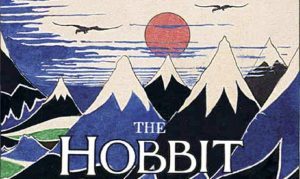
Hobbits might be small, but The Hobbit is not. The widely read children’s fantasy book about a hobbit Bilbo Baggins on his journey to help dwarves reclaim their homeland was J.R.R. Tolkien’s first deep dive into Middle Earth. It was first published 80 years this week.
 The Book that Started it All
The Book that Started it AllThe Hobbit is the first work of long fiction by Tolkien, best known at the time as an Oxford University linguistics professor who had also published a few dozen volumes of poetry.
The Inspiration
The Hobbit, along with The Lord of the Rings and Tolkien’s entire “Middle-Earth” mythology, came out of Tolkien’s concocting of a mythology and invented languages in the 1910s. He only even thought about writing a novel in the early 1930s when a line popped into his head while grading papers: “In a hole in the ground lived a hobbit.” That became the first line of The Hobbit.
The Road to Publishing
Still, he didn’t rush the book off to publishers or a literary agent. He let some friends and students read it. One of those students was Elaine Griffiths, who gave it to a friend named Susan Dagnall, who worked in publishing, who gave it to Stanley Unwin of the publisher Allen & Unwin. He, in turn gave it to his 10-year-old-son to see if it was any good. The kid wrote up a positive review, and so dad agreed to publish it.
First Print Run
Allen & Unwin obviously weren’t expecting a blockbuster hit that would endure for generations. The first print run was just 1,500 copies. All of them sold by Christmas.
Bestseller: 1937 – Today
The publishing industry tracks scales with a service called BookScan. It generates a list of the top 5,000 bestselling books. The Hobbit has never dropped out of the top 5,000.
Dwarrows and Hobbits
According to Tolkien, the plural of dwarf—his race of humanlike in The Hobbit—isn’t dwarves. It’s dwarrows. Tolkien coined the word “dwarf,” but he didn’t coin the word “hobbit.” It first appears in an 1895 fantasy book called Denham Tracts, by Michael Aislabeie Denham.
Boys Club?
There are no female characters whatsoever in The Hobbit. The only woman even mentioned is Belladonna Took, Bilbo Baggins’ mother. The character of Tauriel, played by Evangeline Lilly in Peter Jackson’s movie adaptation of The Hobbit, was created just for the film.
The Sequel
Allen & Unwin asked Tolkien for a sequel after the initial print run sold out. That suggestion ultimately became The Lord of the Rings, first published in 1954.
Want more Tolkien trivia and facts? Enter the Tolkien reader’s companion GIVEAWAY on our sister site for a chance to win: The Heroes of Tolkien, Tolkien: A Dictionary, An Atlas of Tolkien, and The Battles of Tolkien!
The post Happy Birthday, Little Hobbit! appeared first on Trivia Books and Facts | Uncle John's Bathroom Reader.
September 18, 2017
The Origins of Breakfast, Lunch, and Dinner

Or rather the words breakfast, lunch, and dinner.

Breakfast
That’s easy—it’s an English word that developed to connote the first bit of food taken after a person wakes up. They’ve been sleeping, and so not eating, which means any food is “breaking the fast” they’ve been engaged in.
Dinner
As late as the mid-20th century, dinner referred to the meal eaten in the middle of the day, not the one eaten at the end. Oddly enough, the word dinner comes from the 11th century Old French word disner, which meant “to eat breakfast.” As the word was absorbed into English as dinner, it came to refer to the “main” meal of the day, the timing of which changed over the centuries. Over time, the largest meal of the day moved later and later in the day, until it was the evening meal.
Lunch
As dinner became established as a meal eaten in the evening or at night, there came a need for a meal in the middle of the day…or for some kind of sustenance. Lunch is short for luncheon, a word dating to the 1650s that once meant “thick hunk,” as in a thick hunk of meat. At the same time, there was an English word nuncheon, which meant a midday meal. That word is a combination of “noon” and an obsolete word schench, which meant “to have a drink.”
Snack
While it might seem like the notion of having a small meal in between the other, bigger meals seems like a modern invention or the result of advances in marketing and food storage technology, the word “snack” dates all the way back to the 1300s. It’s from a Middle Dutch word, snacken, which means to snatch or to snap—like a jaw quickly scaring down some food. The first written use of snack as a noun dates to the late 18th century. A few decades later, and people in Europe and the Americas were using “snack” as a verb to refer to eating a little bit of something to get them through a few hours.
The post The Origins of Breakfast, Lunch, and Dinner appeared first on Trivia Books and Facts | Uncle John's Bathroom Reader.
September 15, 2017
You Got the Part…Never Mind!

Before Hollywood makes a movie, they’ve got to line up just the right actors for all the roles. Sometimes they think they’ve found somebody…but then change their minds. Here are some stars who landed a big gig, but then lost it for very odd reasons.

Elizabeth Banks
Elizabeth Banks has starred in a few major film franchises, such as the Pitch Perfect movies and The Hunger Games quadrilogy. She almost got her big break in the big budget 2002 Spider-Man movie. Banks was up for the role of Mary Jane Watson, the female lead and romantic interest of Peter Parker, a.k.a Spider-Man. She lost the role because, as producers told her, she was too old. At the time, Banks was 28—a year older than almost co-star Tobey Maguire.
Will Arnett
Will Arnett has parallel careers as an actor and voice actor. Audiences can see his face in shows like Arrested Development and Flaked, and his voice can be heard in BoJack Horseman, The LEGO Batman Movie, and in ads for GMC trucks. His career as a commercial pitchman led Arnett to lose a role in a TV series. In 2008, NBC revived the ’80s action series Knight Rider. Arnett was publicly announced as the voice of talking car KITT. On the reboot, a Ford Mustang was set to be used as KITT. Since Ford was GMC’s competitor, Arnett had to drop out and was replaced by Val Kilmer.
Liam Aiken
Every movie studio in Hollywood wanted the chance to make the potentially lucrative film adaptations of J.K. Rowling’s immensely successful Harry Potter books. That meant Rowling could ask for pretty much any contract stipulation she wanted. She awarded Warner Bros. studio the rights, who gave her the right of cast approval. Specifically, Rowling wanted the England-set movies about English witches and wizards to have a completely British cast. Harry Potter and the Sorcerer’s Stone director Chris Columbus ignored that rule when he cast American child actor Liam Aiken as Harry Potter. Aiken was told he got the part—but then had to be turned away after Rowling nixed the decision.
Dougray Scott
Scottish actor Dougray Scott got his big break with a co-starring role in 2000’s Mission Impossible 2. He could have been launched into super-stardom with his follow-up role: Wolverine in the big-screen adaptation of the comic book X-Men. But production snafus dragged out Mission Impossible‘s shooting schedule so long that it bumped against filming for X-Men. Scott had no choice but to give up Wolverine. A little-known Australian actor named Hugh Jackman got the part—and a spot on the Hollywood A-list.
The post You Got the Part…Never Mind! appeared first on Trivia Books and Facts | Uncle John's Bathroom Reader.
September 14, 2017
Box-Office Bloopers

Everyone loves bleepers…er, bloppers…er, we mean bloopers. Here are a few great ones from the silver screen. (This article was first published in Uncle John’s Curiously Compelling Bathroom Reader .)

Movie: Goldfinger (1964)
Scene: Dressed as Army soldiers, Goldfinger’s crew breaks into Fort Knox and disables personnel with nerve gas.
Blooper: They’re wearing Air Force insignias on their Army uniforms.
The Sound of Music (1965)
Scene: Maria (Julie Andrews) is riding on a bus singing “I Have Confidence in Me.”
Blooper: The bus is supposed to be moving…but the mountains in the background never change.
Free Willy (1993)
Scene: Randolph and Jesse are sitting inside by a window reading a book together.
Blooper: At the beginning of the scene, the sun is shining brightly. Two minutes later, it’s pitch black outside.
Crash (2004)
Scene: Officer Ryan (Matt Dillon) is talking on the phone about his father’s health insurance.
Blooper: Ryan is a patrolman, but he’s wearing sergeant stripes.
Annie Hall (1977)
Scene: The end credits.
Blooper: Christopher Walken’s name is listed as “Christopher Wlaken.”
9 to 5 (1980)
Scene: Violet (Lily Tomlin) gets stopped by the police for a broken taillight.
Blooper: When the car pulls away, both taillights are working fine.
Napoleon Dynamite (2004)
Scene: Napoleon dances to a funk song after Pedro’s class president speech.
Blooper: During the dance, Napoleon’s shirt is tucked in, then it’s untucked, then tucked back in, then untucked, then tucked in again.
The Da Vinci Code (2006)
Scene: In a flashback scene, Mary Magdalene (Charlotte Graham) leaves Jerusalem. As she walks, the Dome of the Rock is clearly visible in the background.
Blooper: This landmark was built in the 7th century…about 700 years after Mary Magdalene died.
Charlie’s Angels (2000)
Scene: The Angels are fighting the Thin Man (Crispin Glover).
Blooper: Just before Dylan (Drew Barrymore) lifts up Alex (Lucy Liu) to kick the Thin Man, she calls her “Lucy,” not “Alex.”
Mr. and Mrs. Smith (2005)
Scene: Three BMWs chase Mr. and Mrs. Smith (Brad Pitt and Angelina Jolie).
Blooper: The movie is supposed to take place in New York City. So why do we see a street sign reading “Los Angeles City Limits”?
2001: A Space Odyssey (1968)
Scene: The shuttle crew discovers the monolith on the moon. As they gaze at it, moon dust begins to blow around.
Blooper: There is no wind on the moon—it has no atmosphere.
Romeo + Juliet (1996)
Scene: Romeo (Leonardo DiCaprio) and Juliet (Clare Danes) lie dead.
Blooper: Romeo blinks.
A Night at the Opera (1935)
Scene: Mr. Driftwood (Groucho Marx) complains that his meal at a restaurant in Milan, Italy, costs $9.
Blooper: They didn’t use dollars in Italy…they used lire.
The post Box-Office Bloopers appeared first on Trivia Books and Facts | Uncle John's Bathroom Reader.
September 13, 2017
Famous and Exhumed

Because sometimes you have to go to extremes…to dig up the truth.

Jesse James
The crime spree of notorious Wild West criminal Jesse James was put to an end in 1882, when he was shot in the head by cohort Robert Ford, reportedly to collect the substantial bounty that was out on him. The shocking death, and the fact that James evaded the law forever led many to believe that James faked his own death. Supposedly, Ford had killed another man, and claimed that it was James. The rumor lived for more than a century (especially thanks to a 100-year-old man named J. Frank Dalton who in 1948 announced that he was really Jesse James). James’ descendants sought to put an end to the notion in 1995, exhuming the outlaw’s body from his grave in Kearney, Missouri. DNA tests confirmed that the long-dead individual really was Jesse James.
President Zachary Taylor
The official cause of death for President Zachary Taylor in July 1850: gastroenteritis caused by eating way too many cherries and washing it down with too much milk over a particularly hot Fourth of July. That’s just too weird and random a death for many, and some historians posited that he was fatally poisoned over his enemies in the debate over the expansion of slavery to newly acquired Western territories. In 1991, the remains of President Taylor were exhumed—a presidential first. Tests didn’t show any poison in Taylor’s system.
President John F. Kennedy
Never mind Taylor—the all-time presidential king of conspiracies is John F. Kennedy, with many people who reject the idea that his assassin, Lee Harvey Oswald, acted alone when he shot the president in November 1963. One theory: Prior to the assassination, Oswald switched places with a Russian spy during a visit to the Soviet Union. Oswald (or the spy), in turn, was shot by Jack Ruby a few days after the Kennedy assassination. In 1981, writer and theory proponent Michael Eddowes received permission from Oswald’s widow for exhumation. Dental records confirmed that the man in Lee Harvey Oswald’s grave was Lee Harvey Oswald.
Salvador Dali
Spanish Surrealist artist and celebrity Salvador Dali—best known for The Persistence of Memory (the one with the melting clocks) and his prominent handlebar mustache, died at age 85 in 1989. In June 2017, a Madrid judge ordered Dali’s body to be disinterred to test a woman’s assertion that Dali was her real father. Maria Martinez was born in 1956, and her mother told her that she had had an affair around that time with the artist while working as a maid in a house nearby Dali’s. The exhumation is a last resort: Dali didn’t leave any biological remains behind, and the only way to do a paternity test is a DNA test on Dali’s bones.
The post Famous and Exhumed appeared first on Trivia Books and Facts | Uncle John's Bathroom Reader.




